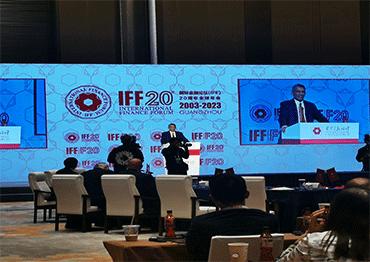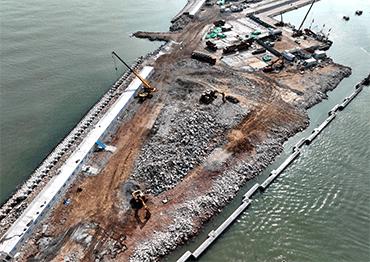The Party’s Political Bureau already identified in July that challenges to growth include insufficient domestic demand, companies facing cash ffow crises and a complicated external environment.
“The economic recovery will be tortuous, as the meeting addressed,” said Zhang Yansheng, chief expert of the China Center for International Economics Exchange, at the IFF forum, citing the pandemic, the difficulties in economic transformation and upgrading, and external challenges.
There is a contrast between improved economic performance and lingering bearish investor market sentiment, which Ding said “reflects not only disappointment over the lack of large-scale stimulus [policy], but also worries over the medium-term and long-term growth potential.”
“Risks and factors remain that may cause economic difficulties, particularly the slump in the property sector, which doesn’t look like it will bottom out in the short term,” Ding said. He added that low inflation and low prices, which could lead to low profit margin of enterprises, will affect market mood across the board.
In the first three quarters of 2023, real estate investment dropped 9.1 percent, while the sales area of commercial housing fell 7.5 percent year-on-year, continuing to drop for five months in a row after a short-lived rise at the beginning of the year.
“There are legitimate concerns. If the property sector is going to precipitate the financial crisis in China, I think there is a lot of trouble ahead,” noted Prasad. Then he said he thinks the government still has enough tools to manage the problem without setting off a real financial crisis.
Local government debt, partly caused by the crashed property market that cut local income from land rents, may also drag down growth if not handled properly, experts said.
Zhang Yansheng said it might be a big challenge to achieve 5 percent GDP growth next year. “Challenges lie in insufficient domestic demand, local government debt, infrastructure investment and the transformation from traditional to new development drivers,” Zhang noted.
In the three years under zero-Covid, average spending per capita increased only 2.8 percent, lower than the growth in per capita disposable income of 4.3 percent, according to Zhang’s figures.
In the first three quarters of 2023, household savings increased 14.42 trillion yuan (US$1.98t), a rise of 2.51 trillion yuan (US$344.31b) over the first two quarters, according to data from the People’s Bank of China.
In the third quarter, investment contributed 29.8 percent of economic growth while net exports dragged growth by 0.68 percentage points. Zhang noted the increasing difficulties of stabilizing foreign trade.
“External demand is shrinking in general, while the complicated geopolitical situation has resulted in declining exports to the US, EU, Japan and South Korea,” Zhang said. “We need to deepen reforms and open wider to the outside world to help stabilize foreign trade and investment.”
He pointed out the challenges associated with a new international environment. “In the past 40 years, China developed in an environment of globalization, under the push of a revolution in new science and technology, and in a global village where big countries could cooperate. But that has fundamentally changed,” Zhang said.

 Old Version
Old Version

